Traditional Braces – Holliston, MA
Achieve a Straight Smile and Even Bite
Whether it’s misalignment, crooked teeth, or malocclusions (uneven bites), traditional braces have been the standard treatment option for decades. In fact, they’ve even been around as a concept for centuries! Simply Orthodontics Holliston is proud to be continuing the tradition of helping individuals and families treat orthodontic issues before they turn into serious problems that negatively affect you later in life. If you, your child or other family member needs to correct severe misalignment, an uneven bite, or another issue, don’t wait any longer. Call our orthodontic office to schedule your first orthodontic appointment to discuss traditional braces in Holliston, MA!

How Traditional Metal Braces Work
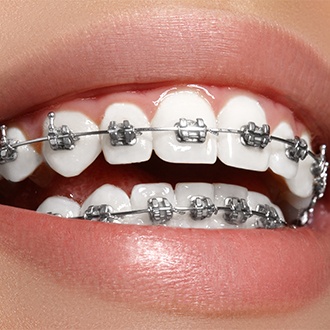
To start, we’ll perform a thorough exam of your teeth, gums and other areas for any unique issues. From there, we’ll schedule you for another appointment. Here, the brackets and archwire will be placed on your teeth. We perform a comprehensive cleaning beforehand, then dry your tooth enamel fully and completely. Next, a small amount of bonding material is applied to each of your individual teeth. Afterwards, a bracket is applied to each tooth. Once bonded, we’ll thread the archwire through each bracket and trim any excess so that it doesn’t poke into your gum tissue. Small elastic bands are then wrapped around each bracket. You’ll have a series of colors to choose from before the elastics are installed.
Expectations for Your Treatment Length
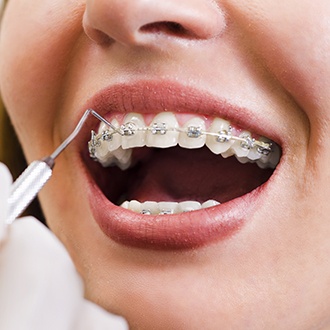
Depending on the severity of your dental problems, the length of your orthodontic treatment can vary. The amount of room you have available in your mouth for teeth to shift as well as the distance teeth need to travel can both influence the success and length of your treatment. Furthermore, good at-home oral hygiene is very important, as well as following all of the orthodontist’s aftercare instructions. In most cases, patients need to wear the braces between one and three years. Following that, a retainer needs to be worn for about 12 months. Retainers are designed to prevent teeth from shifting back to their crooked position.
Are Traditional Metal Braces the Right Option for You?

With a detailed examination, we’ll be able to confirm if you or your child should consider braces for treatment. One of our orthodontists will perform the exam and then give an informed recommendation based on your dental issues and how severe they might be. With traditional braces, crooked and misaligned teeth as well as uneven bites can be addressed. However, if you have a more minor case, there are other options that we may recommend that don’t take as long or require as much of a commitment. Simply Orthodontics Holliston will always walk you through alternatives that best address your oral health and lifestyle choices.
Understanding the Cost of Traditional Braces
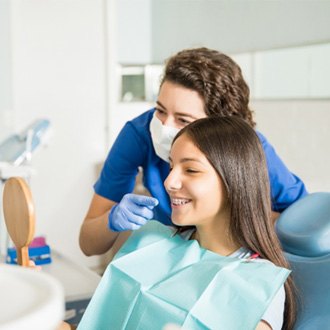
Curious about the cost of braces in Holliston? Good news: our knowledgeable and friendly team can help you find the answer! During your consultation, we will conduct an exam and learn more about your dental needs before determining a price estimate and reviewing your financial options. Of course, if you’d like to learn more about the cost before then, that’s okay too! In that case, keep reading.
Factors That Affect the Cost of Traditional Braces
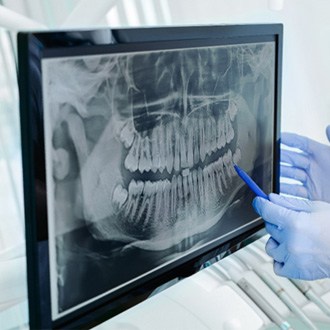
Since no two smiles are the same, there isn’t a flat fee for traditional braces. To determine the cost of your orthodontic treatment, our team will need to consider several important factors, including:
- The severity of your misalignment
- Your age (the older you are, the longer it may take your teeth to move)
- If other orthodontic appliances are needed, like space maintainers or elastics
- Compliance with treatment guidelines
Professional Braces vs. "DIY" Braces: Which Costs More?
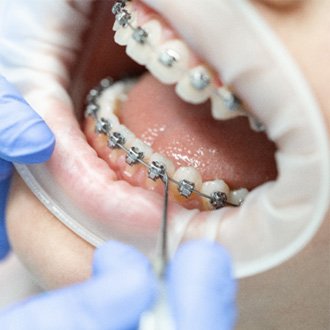
DIY (do-it-yourself) braces use materials like rubber bands to address orthodontic issues like gaps between teeth. Unfortunately, this approach is nowhere near as cost-effective as you might think. After all, DIY methods can move your teeth too fast, resulting in worsened misalignment or, worse, loose teeth. Furthermore, using household items can introduce numerous bacteria and germs to your mouth, which can lead to decay and infection. Ultimately, if you’re interested in straightening your teeth, the best solution for your smile and your wallet is professional braces.
Does Dental Insurance Cover Braces?
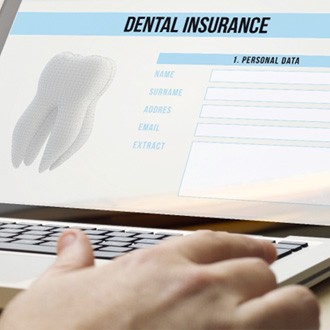
Some dental insurance providers do cover a portion of the cost of braces. So, don’t hesitate to review the fine print on your plan to see if you have available benefits! If you’re having trouble understanding your coverage, you can always reach out to your provider directly or talk to our team. We have experience working with some of the most popular carriers and are proud to welcome Aetna PPO, MetLife, Principal, Guardian, Humana, and many more.
Options for Making Braces Affordable

If you are uninsured, you’ll be happy to hear that dental insurance isn’t the only way to make your orthodontic treatment more affordable. At Simply Orthodontics, we have two other options for our patients: flexible financing and special offers. With flexible financing, you can choose a payment plan that works best with your monthly budget (sometimes with low-to-no interest too!). With our periodic special offers, you can save on consultations, retainers, and more.
Traditional Braces FAQs

From how traditional braces work to the factors that influence the cost, lots of information about this popular orthodontic treatment has been covered on this page. That doesn’t mean our team doesn’t welcome questions though! We love hearing from our patients and helping them determine which teeth-straightening solution is best for them. You can always get in touch with our team directly to learn more, or you can read on to learn some FAQs on the topic.
Can I Chew Gum with Traditional Braces?
In short, it’s not recommended that you chew gum with braces. The chewy nature of this treat can easily tug on your brackets or wires, causing them to fall out of place. Although this might not result in any discomfort, it can cause you to fall off-track with your treatment plan, which you definitely don’t want. That’s why we encourage our patients to not chew gum during their teeth-straightening journey. If you want to freshen your breath, opt for a sugar-free mint!
Why Do My Teeth Feel Loose with Braces?
If your teeth feel slightly loose, don’t be alarmed – this is normal during orthodontic treatment. As your teeth are being moved, the ligaments holding them in place loosen, resulting in a “floating” sensation. The good news is that this will subside once your teeth have “set” into their properly aligned positions. Of course, if your teeth feel like they are on the brink of falling out or you’re simply concerned and want to talk to our team, then give us a call!
Can You Drink Coffee with Traditional Braces?
Good news: you can drink coffee with braces! The only thing that you need to keep in mind is that a portion of your tooth is being covered by the brackets. So, drinking coffee (and other dark-colored beverages, for that matter) can result in uneven discoloration. That’s why we encourage our patients to enjoy their coffee in a “smile-friendly” way, like using a straw and sipping on water simultaneously.
Am I Too Old to Get Braces?
Remember, candidacy for orthodontic treatment isn’t determined by age alone! Instead, it’s based on factors like the issues you’re looking to address and the current state of your oral health. Furthermore, many adults have a smoother time because they understand the commitment, have a grasp on the importance of their oral health, and invest their own time and money into treatment. So, don’t let your age stop you from scheduling a consultation.
What Happens After You Get Your Braces Off?
After you get your braces off, we will give you a custom retainer. This orthodontic appliance serves a very important purpose: it helps keep your teeth in their new and improved positions. If you don’t wear it, your teeth may begin to move back into their previous places (this phenomenon is known as “orthodontic relapse”). Fortunately, avoiding that is as simple as committing to wearing your retainer each evening.
